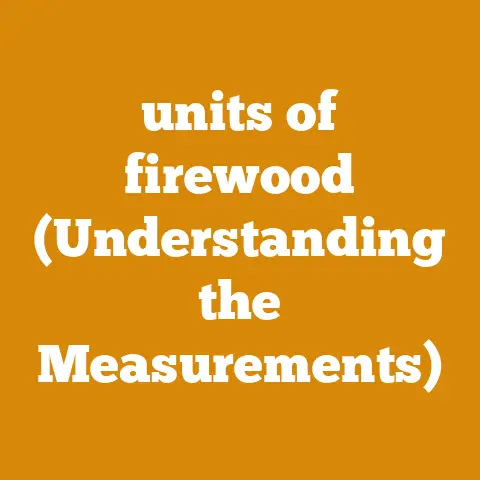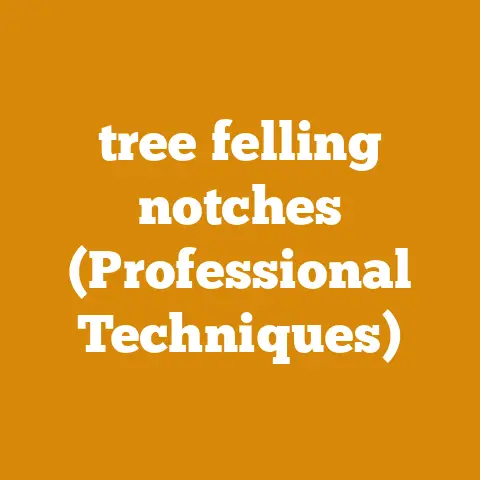Moisture Meter for Firewood Reviews (3 Top Picks)
Ever stood in front of that stack of firewood, scratching your head, wondering if it’s ready to set ablaze?
Trust me, I’ve been there too.
The art of knowing whether your wood is dry enough for a good burn isn’t just about guesswork.
That’s where moisture meters come in handy.
Let me take you through this journey with my top picks and why these gadgets have become indispensable in my toolkit.
My Top Picks for Moisture Meters
1. Wagner Meters Orion 950
The first time I got my hands on the Wagner Meters Orion 950, it was like having a secret weapon against damp wood.
This pinless meter is a marvel – you just press it against the wood, and it instantly reads the moisture content without leaving a mark.
Why I Love It:
- Pinless Design: No holes, no hassles.
Just place it on the wood, and you’re good to go. - Accuracy: It measures moisture from 4-32%, perfect for all wood types.
- Depth Settings: You can adjust the depth settings to match various wood densities, making it versatile.
My Experience:
Last winter, I was dealing with a truckload of oak logs.
The Orion 950 helped me sort them effortlessly.
I found it particularly useful when I had guests over for a bonfire.
There was no time for trial and error; this meter ensured only the best logs made it to the pit.
2. Delmhorst J-2000
Precision enthusiasts, listen up!
The Delmhorst J-2000 is your go-to tool.
It’s a pin-type meter, meaning it uses pins to pierce the wood and measure moisture content directly.
Yes, it leaves tiny marks, but the trade-off in accuracy is well worth it.
Key Features:
- Pin-Type Precision: The pins penetrate the wood, giving highly accurate readings.
- Moisture Range: Measures from 6-40%, covering all your firewood needs.
- Durability: Built like a tank for rugged outdoor conditions.
A Story to Tell:
I remember prepping firewood for a big camping trip.
The J-2000 was my trusty sidekick, ensuring every log was just right.
It’s like having a seasoned lumberjack whispering in your ear about which logs are perfect for burning.
3. General Tools MMD4E
On a tighter budget?
The General Tools MMD4E is your best bet.
This meter is simple, effective, and doesn’t break the bank.
Notable Features:
- Affordable: Offers quality at a price that won’t hurt your wallet.
- Dual Measurement Modes: Can measure both wood and other building materials.
- Compact Size: Easy to carry around, fits right into your toolbox.
My Take:
I lent this one to a buddy who was just starting his wood-burning journey.
He appreciated its straightforward design and reliable results, especially when avoiding those frustrating smoky fires.
How to Use a Moisture Meter
Now that you’re familiar with my top picks, let’s dive into how to use these nifty devices.
Trust me, it’s easier than you think!
Step-by-Step Guide:
- Preparation: Gather all your firewood together in an accessible area.
Make sure the surfaces are clean of dirt or debris. - Choose Your Meter: Decide whether you prefer the pin-type or pinless meter based on your needs.
- Taking Measurements:
- For pin meters: Insert the pins into the wood until they are fully embedded.
- For pinless meters: Simply press the device against the wood surface firmly.
- Read the Display: Look at the moisture level displayed on the screen and note it down.
- Evaluate Results: Ideally, firewood should have a moisture content between 15-20% for optimal burning conditions.
Safety Precautions
Important: Always wear protective gloves when handling firewood and using meters with pins.
This helps prevent splinters and injuries.
Equipment Requirements
Before you start measuring, make sure you have everything you need:
- A reliable moisture meter from our top picks.
- Protective gloves to keep your hands safe.
- Clean rags for wiping down wood surfaces before testing.
Personal Insights and Tips
I’ve learned a few things along the way that I’d love to share with you:
- Consistency is Key: Always measure at the same spot on different logs for consistency.
- Multiple Readings: Take several readings on different parts of the log to ensure accuracy.
- Environment Matters: Remember that temperature and humidity can affect readings, so try to measure in similar conditions each time.
Common Questions and Concerns
What if my readings are inconsistent?
Ensure the wood is at room temperature and hasn’t been exposed to recent rain or freezing conditions.
Can these meters be used on other materials?
Absolutely!
Many models are versatile enough for building materials like drywall and concrete too.
Troubleshooting Tips
If you’re running into issues, here are some quick fixes:
- Make sure your meter’s batteries are fresh; a weak battery can cause unreliable readings.
- Check that the probes or sensors are clean and undamaged.
- If readings seem off, try calibrating your meter as per the manufacturer’s instructions.
Best Practices
Here are some tips to get the most out of your moisture meter:
- Store your meter in a dry place to prevent damage from moisture.
- Regularly calibrate your meter according to the manufacturer’s guidelines.
- Keep a log of your readings for future reference; this can help track drying progress over time.
Important Reminders
Always double-check moisture levels before burning your wood to avoid excessive smoke or incomplete combustion.
Safety first!
FAQ Section
Q: Can a moisture meter detect rot in wood?
A: While it can’t directly detect rot, high moisture levels can signal potential rot issues due to retained moisture.
Q: How often should I check my firewood?
A: It’s good practice to check periodically during drying seasons and always before burning.
Q: Are pinless meters as accurate as pin-type?
A: Both types are accurate but serve different purposes; pinless is less invasive while pin-type offers more precision on dense woods.






